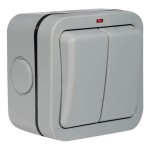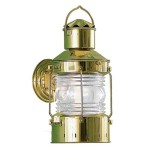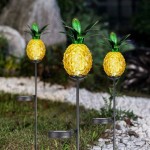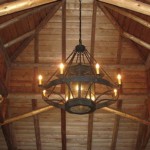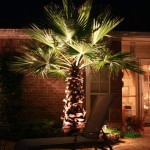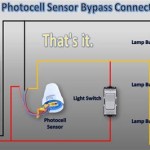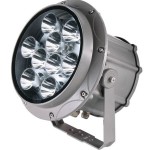Can You Add a Dusk to Dawn Sensor to Outdoor Lights?
Enhancing outdoor lighting with automated control is a popular upgrade for homeowners. Dusk to dawn sensors offer a convenient and energy-efficient solution, eliminating the need for manual switching. This article explores the feasibility and methods of adding dusk to dawn sensors to outdoor lighting systems.
Understanding Dusk to Dawn Sensors
Dusk to dawn sensors, also known as photocells or photoelectric sensors, operate based on ambient light levels. These sensors contain a photoresistor, a component that changes its electrical resistance in response to light intensity. When the ambient light falls below a predetermined threshold, typically at dusk, the sensor activates, switching on the connected lights. Conversely, as daylight returns and the ambient light level rises above the threshold, the sensor deactivates, turning the lights off.
Types of Dusk to Dawn Sensors
Several types of dusk to dawn sensors are available, each designed for different applications. Integral sensors are built into the lighting fixture itself, providing a streamlined appearance. Screw-in sensors are designed to replace a standard light bulb socket, offering a simple retrofit solution. External sensors, typically enclosed in a weatherproof housing, can be wired directly into the lighting circuit, providing more flexibility in placement and control.
Adding a Dusk to Dawn Sensor to Existing Lights
Integrating a dusk to dawn sensor into an existing outdoor lighting system is often straightforward. The specific method depends on the type of sensor and the existing wiring configuration.
Method 1: Replacing a Standard Bulb with a Screw-In Sensor
For fixtures with a standard bulb socket, a screw-in dusk to dawn sensor offers the simplest solution. The existing bulb is removed and replaced with the sensor. Then, a regular light bulb is screwed into the sensor's socket. This method requires no wiring changes and is ideal for single-bulb fixtures.
Method 2: Wiring an External Sensor into the Circuit
For more complex setups or when using an external sensor, wiring modifications are necessary. Typically, the sensor is wired in series with the light fixture. This involves interrupting the hot wire leading to the light and connecting it through the sensor. Detailed wiring instructions are usually included with the sensor and should be followed carefully. Working with electrical wiring requires caution and it is recommended to consult a qualified electrician if unsure.
Method 3: Replacing the Fixture with an Integrated Sensor Model
Another option is to replace the entire lighting fixture with a model that has a built-in dusk to dawn sensor. This provides a clean, integrated solution but may involve more extensive work depending on the existing fixture's mounting and wiring.
Choosing the Right Dusk to Dawn Sensor
Selecting the appropriate dusk to dawn sensor requires considering several factors. The voltage rating of the sensor must match the voltage of the lighting system. The sensor's sensitivity, expressed in lux, determines the ambient light level at which it activates. The sensor's housing should be weatherproof and rated for outdoor use. Additionally, some sensors offer adjustable sensitivity and time delays to customize the activation and deactivation times.
Benefits of Using Dusk to Dawn Sensors
Implementing dusk to dawn sensors offers several advantages. Automated lighting control enhances convenience by eliminating the need to manually switch lights on and off. Energy savings are achieved by ensuring lights operate only when needed, reducing electricity consumption. Enhanced security is provided by consistent outdoor lighting, deterring potential intruders. Furthermore, dusk to dawn sensors contribute to a greener lifestyle by minimizing light pollution and energy waste.
Safety Precautions
When working with electrical components, safety should always be a priority. Before starting any installation, disconnect the power to the circuit at the breaker box. Use appropriate tools and follow all manufacturer instructions carefully. If unsure about any aspect of the installation, consult a qualified electrician.
Troubleshooting Common Issues
Occasionally, dusk to dawn sensors may malfunction. Common issues include lights staying on continuously, lights not turning on at dusk, or flickering lights. These problems can often be attributed to incorrect wiring, a faulty sensor, or obstructions blocking the sensor's view of ambient light. Checking the wiring connections, testing the sensor with a multimeter, and ensuring the sensor is unobstructed can often resolve these issues.

Dusk To Dawn Motion Sensor Outdoor Porch Lights With Gfci Waterproof Light Fixture Anti Rust Exterior Wall Mount 3 Modes For House Garage Bulb Not Included Com

Aloa Decor 1 Light Matte Black Dusk To Dawn Sensor Outdoor Wall Lantern Sconces With Seeded Glass And Built In Gfci S H7087w06a The Home Depot

Everything Need To Know About Dusk Dawn Light Sensor

Aloa Decor 1 Light Matte Black Dusk To Dawn Sensor Outdoor Wall Lantern Sconces With Seeded Glass And Built In Gfci S H7087w06a The Home Depot

Auraglow Dusk Till Dawn Sensor Up Down Outdoor Wall Light Avebury Stainless Steel Led Lighting

Led Outdoor Wall Light Dusk Dawn Sensor White Water Glass

John Timberland Oberlin Rustic Farmhouse Outdoor Barn Light Fixture Black Dusk To Dawn Motion Sensor 9 Clear Seedy Glass For Exterior Deck House Yard Com

Filiyano Motion Sensor Outdoor Wall Light Black Dusk To Dawn Lighting Led Waterproof Exterior Fixture Modern Porch Outside Mount Fo In 2024 Lights

Lnc Modern Outdoor Wall Light With Motion Sensor 1 Black Exterior Sconce For Porch Garage Pergola Gazebo Deck Garden Nfzer3hd14745i8 The Home Depot

Dusk To Dawn Outdoor Lights Exterior Porch With Gfci Sensor Wall Light Fixture Mount Anti Rust Lantern Waterproof Sconce Outside For House Garage Front Door Com
